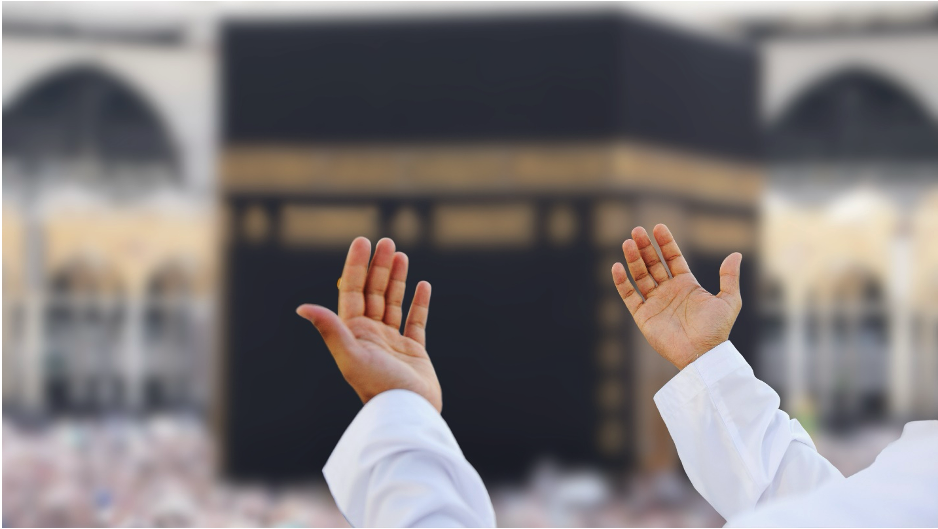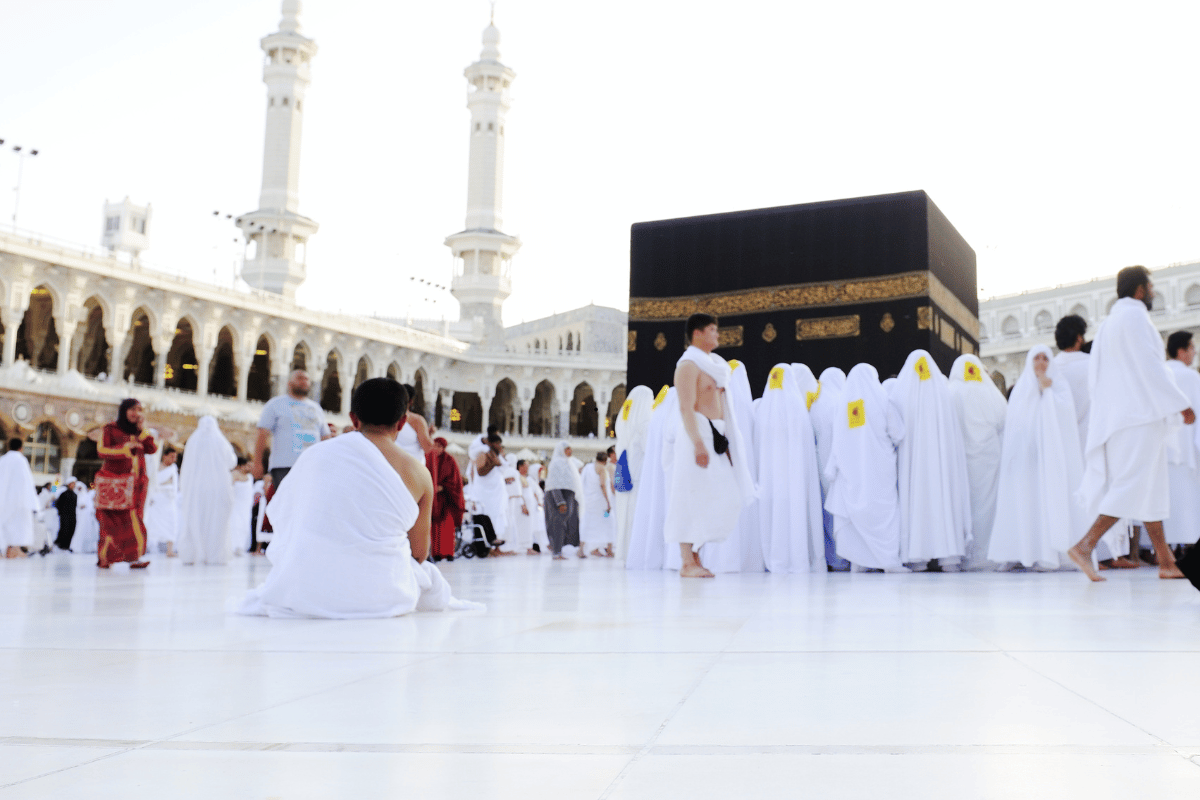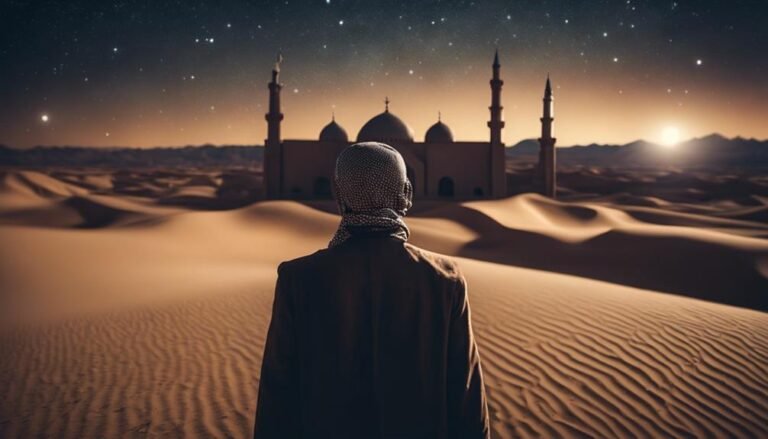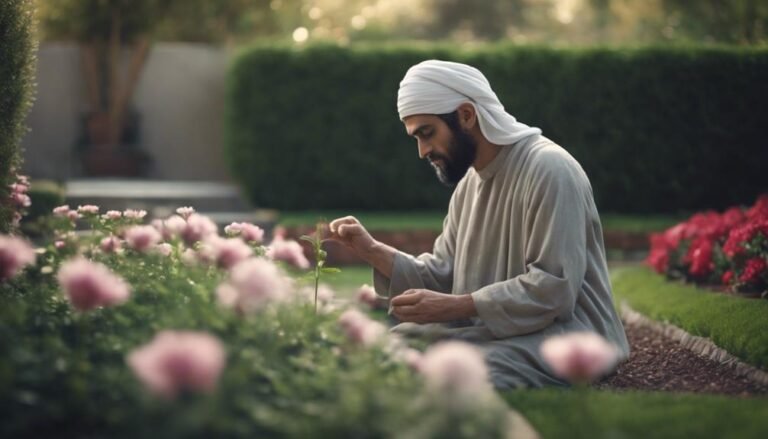The Importance of the Kaaba in Shaping Islamic Identity and Practice
Standing 50 feet tall and having a base measuring 35 by 40 feet, the Holy Kaaba is amongst the most visited religious sites in the world. Millions of devout Muslims throng the Sacred Mosque annually, especially during the Holy month of Dhul Hijja. The Holy Kaaba in Makkah is the center of Muslim worship. The Sacred House of Allah (SWT) symbolizes Muslims’ submission to the Most Gracious, Most Merciful (SWT) and is integral to Islamic identity and practice.
The black cube-shaped building holds great significance for Muslims globally, regardless of their sectarian affiliations. All Muslims who are physically and financially able to afford the pilgrimage to the Holy Kaaba must do so at least once in their lifetime. While the actual building may not be as grand in size or intricate in terms of architecture, it presents a breathtaking sight nonetheless. As thousands of people circumambulate the Holy Kaaba making it the center of their faith and worship.
History of the Holy Kaaba
The Holy Kaaba is believed to be the most ancient place of worship. Sources differ as to whether it was initially built by angles or Prophet Adam (عَلَيْهِ ٱلسَّلَامُ). There is, however, an agreement that the current position of the Holy Kaaba is directly below the Holy Kaaba located in the seventh heaven, known as Bait-ul-Ma’mur.
Most famously, the mosque was built, or rebuilt, by Prophet Ibrahim (عَلَيْهِ ٱلسَّلَامُ) and Prophet Ismail (عَلَيْهِ ٱلسَّلَامُ) after the former was instructed to leave his wife, Hazrat Hajira (رَضِيَ ٱللَّٰهُ عَنْهَا), and their young son alone in the vast desert of Makkah.
Allah (SWT) commanded Prophet Ibrahim (عَلَيْهِ ٱلسَّلَامُ) to construct the Holy Kaaba in its current location as evidenced by the following verses of the Holy Quran:
“Remember, We made the House (of Ka’bah) a place of congregation and safe retreat, and said: “Make the spot where Abraham stood the place of worship;” and enjoined upon Abraham and Ishmael to keep Our House immaculate for those who shall walk around it and stay in it for contemplation and prayer, and for bowing in adoration.” [2:125]
The verse indicates how the Prophet Ibrahim (عَلَيْهِ ٱلسَّلَامُ) and Prophet Ismail (عَلَيْهِ ٱلسَّلَامُ) were directed by Allah (SWT) to not only build the Holy Kaaba but also care for it and maintain it for worshippers. The responsibility to maintain the House of Allah (SWT), or Baitullah, was passed down through generations.
By the time the Holy Prophet (SAW) was born, the keys of the Holy Kaaba were in the guardianship of the Quraysh. The existence of the Holy Kaaba in Makkah was a source of prosperity in the region since worshippers visiting the House of Allah (SWT) elevated the position of the entire city.
The people of Makkah became traders, buying and selling goods and gaining wealth despite living in a harsh desert environment. This was the blessing that Allah (SWT) had promised Prophet Ibrahim (عَلَيْهِ ٱلسَّلَامُ) and his descendants.
However, despite Allah’s (SWT) upon them the people of Makkah turned to idol worship and filled the Holy Kaaba with idols. It was not until the Conquest of Makkah in the 8th Hijri or ^29-630 AD, that Baitullah was purged of all idols and cleansed by the Holy Prophet (SAW) himself.
Since then the guardianship of the Holy Kaaba has been handed down in the Bani Shaiba family. Millions of Muslims visit the Sacred Mosque throughout the year to pray to Allah (SWT) and seek His forgiveness.
The Spiritual and Ritual Importance of the Holy Kaaba
The Holy Kaaba is more than a place of worship. It is an enduring symbol of Islamic values and spirituality. This is why it plays a key role in defining and shaping Muslim identity. The building of the Holy Kaaba has been renovated many times, yet the fundamental spirit of Allah’s (SWT) House remains consistent through and through.
Holy Kaaba is revered as a basic part of Islamic identity for the following reasons:
Place of Worship
The House of Allah (SWT) is a place of worship. Muslims from around the globe gather there to serve their Lord (SWT). Every Muslim strives to visit the Holy Kaaba at least once in their life to fulfill their duty to Allah (SWT).
Due to this central position the Holy Kaaba has become one of the most prominent symbols of Islam. Even non-Muslims recognize the significance that Baitullah holds for the Muslims.
Direction of the Qibla
Pilgrimage to the Holy Kaaba is among the pillars of faith in Islam. However, the place is also related to another pillar of Islam: Salah. The Kaaba represents the direction of prayer, as all Muslims must face it in order to perform Salah.
This means that Muslims all over the world turn their faces towards the direction of the Holy Kaaba five times each day. The Holy Kaaba, as a result, provides a sense of direction, both practically and spiritually.
Symbol of Unity
Muslim unity and brotherhood is a vital component of Islamic identity. The Holy Prophet (SAW) united Muslims as one ummah. This implies that all our differences and biases must be removed and we must embrace every Muslim as a member of our family. The social cohesion this idea results in is unparalleled.
The Holy Kaaba beautifully symbolizes this unity. Muslims all face the same direction in unison while performing the five daily prayers. Even though prayer timings and the location of the qibla in relation to a person’s current location differ, the idea that we have to face the Holy Kaaba remains intact.
Similarly, at the time of Umrah and Hajj, Muslims from around the world converge to a single location wear the same clothes, and perform the same rituals of worship. This uniformity is unprecedented as believers shed their expressions of cultural distinctions, like their clothes, to adopt the same appearance as everyone else.
This overt expression of unity has a deep spiritual effect. As a Muslim joins fellow Muslims in circumambulating the House of Allah (SWT), they feel the power of the bond they share. A bond based on blind and unrelenting faith in Allah (SWT).

Complete Submission to Allah (SWT)
Submission to Allah (SWT) is at the core of Islamic belief. All other beliefs derive from this singular tenant that only Allah (SWT) deserves our complete devotion. Nothing symbolizes this more than the visit to the Holy Kaaba.
As a Muslim circumambulates the House of Allah (SWT) they are practically and symbolically affirming that Allah (SWT) is at the center of all our beliefs. The Holy Kaaba reminds us of the All-Mighty, the All-Powerful.
Linkage within the Prophetic Tradition
The Holy Kaaba was built by Prophet Ibrahim (عَلَيْهِ ٱلسَّلَامُ) and Prophet Ismail (عَلَيْهِ ٱلسَّلَامُ) and was revered by people. The Holy Prophet (SAW) also played a key role in the rebuilding of the Holy Kaaba as he resolved the dispute when it came to placing the Hajr-e-Aswad, the Black Stone, inside it.
The Holy Kaaba connects the Holy Prophet (SAW) with the Prophet Ibrahim (عَلَيْهِ ٱلسَّلَامُ) who was appropriately called the ‘Father of the Prophets’.
The Blessings of the Holy Kaaba
It is impossible to fully relate the significance of the Holy Kaaba. It is much more than a building or even a place of worship. Every single aspect of the place holds a deeper meaning. It symbolizes Muslim identity and helps to shape it through a shared set of beliefs.
The Holy Kaaba invokes respect and holds a special place in every Muslim’s heart.







